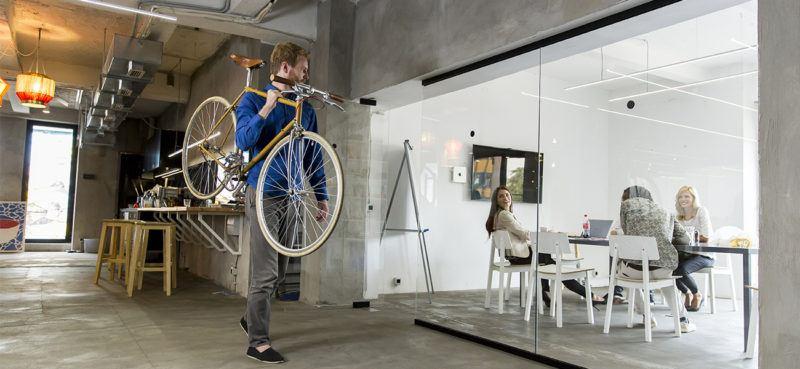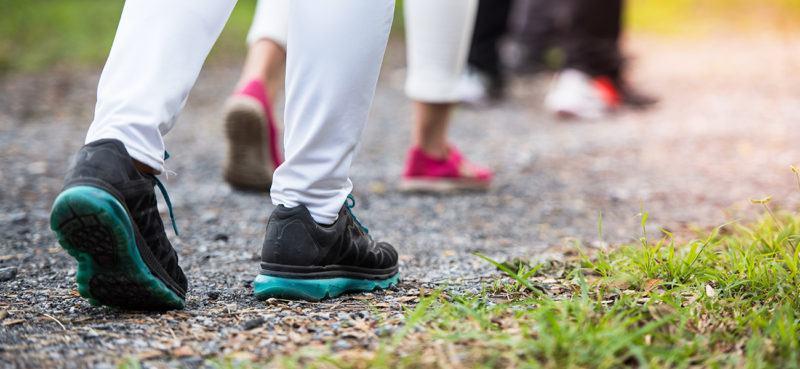
Today the UK is celebrating National Fitness Day. A day where people are encouraged to take part in exercise and see the physical and mental benefits it can bring. Unfortunately, judging by recent statistics, making this a reality has never been more important than it is in 2018.
In 1990, the percentage of UK adults who were ‘overweight’ stood at 50%. Today, we’re up to roughly 60% and are predicted to hit 70% by 2020. Meanwhile, the UK ranks amongst the most inactive populations in the world according to a recent World Health Organization study. 36% of UK adults were classified as “inactive” in 2016. Someone was defined as inactive when they “did less than 150 minutes of moderate exercise – or 75 minutes at a vigorous intensity – a week”.
For most us, work takes up a large proportion of our weekly routine. And with sedentary jobs increasingly common, finding time to exercise during the day can fall down the pecking order. But, when people do increase their activity – and, therefore, their fitness – it really can make a difference. For instance, did you know more global deaths-per-year can be attributed to inactivity (5.3 million) than to smoking (5.1 billion), but introducing 30 minutes of daily activity into your routine can lead to a 20-40% reduction in cardiovascular and all-cause mortality?
With that in mind, we’ve put together 5 simple ways to get add some activity to your typical day.

Step Up
Let’s face it. When given the option of taking the lift or the stairs to get to the office there is usually only one winner.
But swapping the lift for the staircase is a simple but effective way to increase your heart rate and get the blood flowing. Whether on your way in for the day, heading to lunch or even just going for a toilet break, opt for the stairs and increase that step count.
On Your Feet
It’s not uncommon for the average UK adult to spent over seven hours of their day sitting. The types of jobs we do, not to mention the fact we’re apparently watching around 12 hours of on-demand TV per-week these days (!), is only making this worse.
Being sedentary is linked to several health issues including diabetes and poor fitness so spending time on your feet is important. You could do this by investing in a standing desk or, better yet, simply breaking up your day with “shorter bouts of activity for just one to two minutes,” as recommended by the UK’s Chief Medical Officers.
One Stop Early
Because of hectic work schedules or simply where you travel from, it’s not always possible to be flexible with your commute. But, if you can, try mixing up your travel routine during the week.
Hop off the tube or bus one stop early a couple of times a week and stretch your legs – you might feel the benefit of the little extra time it gives you to think, too! And, if you’re driving into work, how about parking just that little bit further from the office?

Let’s Do Lunch
Hands up if you often find yourself eating lunch at your desk, switching between replying to emails and grabbing a bite of your sandwich? It’s a common issue in the modern workforce but your allocated lunch break is a great opportunity to add some exercise to your day.
Lots of gyms now offer specially designed lunch break workouts, but even taking a walk outside with colleagues can help you reach your daily goal of 30 minutes of physical activity. What if your boss looks concerned you’re not multi-tasking with a desk lunch anymore? Just remind them taking proper lunch breaks have been shown to improve decision-making and productivity.
See What’s on Offer
Finally, you might be surprised by what your place of work offers in terms of initiatives that encourage exercise. ‘Cycle to work’ and ‘walk to work’ schemes, or even discount gym memberships and other employee benefits linked to exercise are increasingly common and can be a helping hand in pursuit of a more active lifestyle.
Let’s make every day an active day. And, remember, you can find out your own accurate fitness level using the new feature in the Firstbeat Lifestyle Assessment.
If you liked this article, you should subscribe to our newsletter.
You might also be interested in

Want to Boost Your Productivity at Work? Here’s How Increasing Physical Activity Can Help
Introducing physical activity into your routine can improve multiple areas important for workplace productivity.

How to Peak at the Right Time? Training Status Helps You to Get into the Best Shape of Your Life
You can’t have the same fitness all year round, at least not if you want to get the most out of your performance. Firstbeat Training Status helps you to optimize your workout and peak at right time.

From Athletes to Everyman – Why Does Fitness Matter?
Fitness Level is an exciting new feature to Lifestyle Assessment – all it takes is 30 minutes of continuous, moderate to brisk walking on flat terrain.

